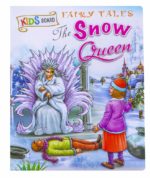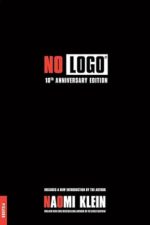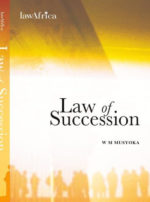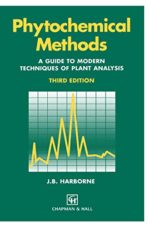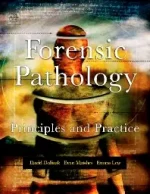-
The Fallen
KShs 400.00The fallen-David Baldacci returns with the next blockbuster thriller in his #1 New York Times bestselling Memory Man series featuring detective Amos Decker–the man who can forget nothing.Amos Decker and his journalist friend Alex Jamison are visiting the home of Alex’s sister in Barronville, a small town in western Pennsylvania that has been hit hard economically. When Decker is out on the rear deck of the house talking with Alex’s niece, a precocious eight-year-old, he notices flickering lights and then a spark of flame in the window of the house across the way. When he goes to investigate he finds two dead bodies inside and it’s not clear how either man died. But this is only the tip of the iceberg. There’s something going on in Barronville that might be the canary in the coal mine for the rest of the country.Faced with a stonewalling local police force, and roadblocks put up by unseen forces, Decker and Jamison must pull out all the stops to solve the case. And even Decker’s infallible memory may not be enough to save them.
KShs 695.00 -
-
No LOGO-Naomi Klein
KShs 1,595.00NO LOGO was an international bestseller and “a movement bible” (The New York Times). Naomi Klein’s second book, The Shock Doctrine, was hailed as a “master narrative of our time,” and has over a million copies in print worldwide.
In the last decade, No Logo has become an international phenomenon and a cultural manifesto for the critics of unfettered capitalism worldwide. As America faces a second economic depression, Klein’s analysis of our corporate and branded world is as timely and powerful as ever.
Equal parts cultural analysis, political manifesto, mall-rat memoir, and journalistic exposé, No Logo is the first book to put the new resistance into pop-historical and clear economic perspective. Naomi Klein tells a story of rebellion and self-determination in the face of our new branded world.
-
Law of Succession-W.M MUSYOKA
KShs 1,620.00This text broadly and comprehensively covers the area of law of succession in Kenya. It exposes the substantive succession legal regime applying in Kenya as well as the Kenyan probate practice.
-
Resource mobilization Third Edition
KShs 11,340.00A compounding model resolution with available relevant data can often provide insight towards a solution methodology; which Resource mobilization models, tools and techniques are necessary? What would be the goal or target for a Resource mobilization’s improvement team? Are we making progress? and are we making progress as Resource mobilization leaders? In what ways are Resource mobilization vendors and us interacting to ensure safe and effective use? Is the Resource mobilization scope manageable?
Defining, designing, creating, and implementing a process to solve a challenge or meet an objective is the most valuable role In EVERY group, company, organization and department.
Unless you are talking a one-time, single-use project, there should be a process. Whether that process is managed and implemented by humans, AI, or a combination of the two, it needs to be designed by someone with a complex enough perspective to ask the right questions. Someone capable of asking the right questions and step back and say, ‘What are we really trying to accomplish here? And is there a different way to look at it?’
This Self-Assessment empowers people to do just that – whether their title is entrepreneur, manager, consultant, (Vice-)President, CxO etc… – they are the people who rule the future. They are the person who asks the right questions to make Resource mobilization investments work better.
This Resource mobilization All-Inclusive Self-Assessment enables You to be that person.
All the tools you need to an in-depth Resource mobilization Self-Assessment. Featuring 683 new and updated case-based questions, organized into seven core areas of process design, this Self-Assessment will help you identify areas in which Resource mobilization improvements can be made.
In using the questions you will be better able to:
– diagnose Resource mobilization projects, initiatives, organizations, businesses and processes using accepted diagnostic standards and practices
– implement evidence-based best practice strategies aligned with overall goals
– integrate recent advances in Resource mobilization and process design strategies into practice according to best practice guidelines
Using a Self-Assessment tool known as the Resource mobilization Scorecard, you will develop a clear picture of which Resource mobilization areas need attention.
Your purchase includes access details to the Resource mobilization self-assessment dashboard download which gives you your dynamically prioritized projects-ready tool and shows your organization exactly what to do next. You will receive the following contents with New and Updated specific criteria:
– The latest quick edition of the book in PDF
– The latest complete edition of the book in PDF, which criteria correspond to the criteria in…
– The Self-Assessment Excel Dashboard, and…
– Example pre-filled Self-Assessment Excel Dashboard to get familiar with results generation
Plus an extra, special, resource that helps you with project managing.
-
Phytochemical Methods A Guide to Modern Techniques of Plant Analysis 3rd Edition by A.J. Harborne (Author
KShs 4,500.00This long awaited third edition of Phytochemical Methods is, as its predecessors, a key tool for undergraduates, research workers in plant biochemistry, plant taxonomists and any researchers in related areas where the analysis of organic plant components is key to their investigations.
Phytochemistry is a rapidly expanding area with new techniques being developed and existing ones perfected and made easier to incorporate as standard methods in the laboratory. This latest edition includes descriptions of the most up-to-date methods such as HPLC and the increasingly sophisticated NMR and related spectral techniques. Other methods described are the use of NMR to locate substances within the plant cell and the chiral separation of essential oils.
After an introductory chapter on methods of plant analysis, individual chapters describe methods of identifying the different type of plant molecules: phenolic compounds, terpenoids, organic acids, lipids and related compounds, nitrogen compounds, sugar and derivatives and macromolecules. Different methods are discussed and recommended, and guidance provided for the analysis of compounds of special physiological relevance such as endogenous growth regulators, substances of pharmacological interest and screening methods for the detection of substances for taxonomic purposes. It also includes an important bibliographic guide to specialized texts.
This comprehensive book constitutes a unique and indispensable practical guide for any phytochemistry or related laboratory, and provides hands-on description of experimental techniques so that students and researchers can become familiar with these invaluable methods. -
Marketing Warfare: 20th Anniversary Edition: Authors’ Annotated Edition
KShs 650.00It rocked the marketing world in 1986, and now, nearly two decades later, the strategies set down in Marketing Warfare are still just as relevant. To commemorate the 20th anniversary of the classic book that changed an industry, marketing mavens Al Ries and Jack Trout will reunite to annotate their book for another generation of marketers. The Anniversary Edition offers:
• A fresh perspective on why waging marketing warfare is even more important today than 20 years ago
• In-depth analyses of some of the biggest marketing successes and failures of the last two decades
• Reproductions of successful (or not so successful) ads, accompanied by the authors’ comments on why they succeeded or failed
• Valuable follow-up to the original edition. Where are these companies now? Who’s still a market leader?Marketing is war. To triumph over the competition, it’s not enough to target customers. Marketers must take aim at their competitors―and be prepared to defend their own turf. This indispensable guide gives smart fighters the best tactics―defensive, offensive, flanking, and guerrilla. Marketing Warfare is the book that wrote the new rules
-
Beyond White Mischief: The Memoirs of a Tea Planter’s Wife-SHEILA WARD
KShs 395.00When Sheila Ward went off to RADA to train as an actress in the early 1950s, she had no idea of the stormy path her life would take. After a short career as an actress in rep, with all the joys of juggling different roles and the comic possibilities of living in grim digs on very little money, she met and married a tea planter, and went off to live in Africa.
Through Sheila’s diaries, life in Africa springs into sharp relief as she learns to live with snakes, bugs and the recalcitrant servants. Sheila and her husband have four children and gradually adapt to a very different way of life. She meets the author Gerald Durrell, and Joy and George Adamson of Elsa the lioness fame, entertains fellow ex-pats and learns to love the unique terrain of Kenya’s hills.
-
Dr. Seuss The Cat in the Hat Activity Placemats!: Includes puzzles, mazes, dot-to-dot, word searches, and more! Paperback
KShs 795.00Keep your child engaged and entertained wherever you may go, thanks to the magic of Dr. Seuss. Iconic characters and favorite rhymes that accompany on-the-go activities, such as coloring, mazes, puzzles, and more. Bring out the book at home for a special treat, or use it to keep kids from getting bored while traveling or running errands!
Make mealtime fun with Dr. Seuss The Cat in the Hat Activity Placemats! Featuring puzzles, games, and coloring activities kids will love
-
Forensic Pathology Principles and Practice
KShs 60,000.00Forensic Pathology is a comprehensive reference that uses a case-oriented format to address, explain and guide the reader through the varied topics encountered by forensic pathologists. Developed in response to a severe void in the literature, the book addresses topics ranging from medicolegal investigation of death to death scene investigation, forensic autopsy, and artifacts of resuscitation as well as complications of medical therapy, forensic osteology, forensic odontology, forensic photography, and death certification. The book includes various types of cases, including sudden natural death, asphyxia, motor vehicle collisions, death in custody, child abuse and elder abuse, acute psychiatric and emotional deaths, and pregnancy. It contains sample descriptions of pathological lesions which serve to aid pathologists in reporting their findings to law enforcement agencies, attorneys, and others involved in investigations of sudden death. The concepts outlined in the text are beautifully illustrated by large, colorful photographs. There are also “Do and Don’t” sections at the end of each chapter that provide guidance for handling the types of cases examined. This work will benefit not only experienced forensic pathologists, but also hospital pathologists who occasionally performs medicolegal autopsies; doctors in training; medical examiners; law enforcement personnel; crime scene investigators; attorneys; and fellows and students of the medical sciences.


